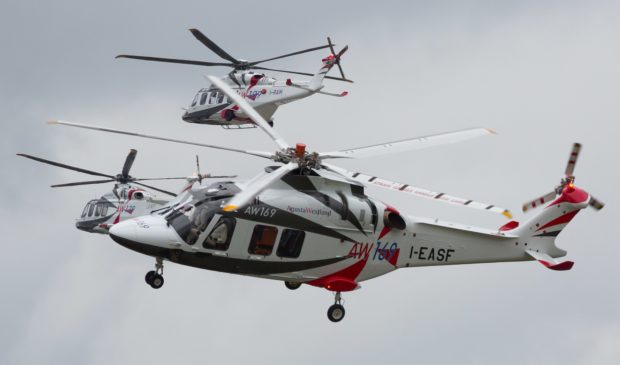Airbus’ protest at Commissioners Court crashes and burns
Wednesday, February 7, 2018 by
Caleb Pritchard The Travis County Commissioners Court shot down a protest leveled by aircraft manufacturer Airbus over the county’s selection process for a new fleet of STAR Flight helicopters.
A team of officials from the company’s helicopter division showed up to the court’s regular voting session on Tuesday to challenge the reasoning behind the county’s choice last fall to purchase three new AW169 helicopters made by AgustaWestland Philadelphia Corp. for $34 million.
Ron Stevenson, Airbus Helicopters Inc. key account manager, told the court that his company was not initially stunned at being passed over. Nonetheless, as a matter of routine, the company requested a debriefing about the selection process from county purchasing agent Bonnie Floyd, who sent over details about the scoring criteria and how each firm compared.
“We just started to scratch our heads when we saw that,” Stevenson said.
He claimed that the true cost of the AW169 would greatly exceed the $34 million due to a $21 million estimated operating cost over 10 years. Furthermore, he argued, points awarded to AgustaWestland’s helicopters based on potential uses STAR Flight is planning – firefighting, search-and-rescue missions, and emergency medical services – should be invalidated due to the lack of Federal Aviation Administration-approved data owing to the fact that the FAA has not yet certified the AW169 for the equipment configurations necessary for several of those uses.
“This is where we started to say, well, wait a minute. There are too many unknowns here to really know that this is going to be any better,” Stevenson said.
He also cited data provided by third-party research firm Conklin & de Decker that indicated the AW169 has a higher operations and maintenance cost per hour compared to Airbus’ H145. According to a slide on his presentation, based on an estimate of 400 hours of flight per aircraft each year, the county would end up paying $6.4 million more for three AW169s as opposed to three H145s over the next decade.
After Stevenson laid out his case, Commissioner Gerald Daugherty asked him why he thought county staff made the recommendation for the AW169s.
Stevenson suggested that staff had been beguiled by the faster, roomier aircraft and acted on an impulse inspired by “emotion.”
“It’s like going to the car dealership,” he said before projecting the thought process. “‘It was fast, pretty, I loved it, let’s get one.’”
Unsurprisingly, Floyd did not share that assessment. During her rebuttal, she explained that the county is saving money by reducing the STAR Flight fleet from its current complement of four helicopters to three. Also, she said, the European Aviation Safety Agency has certified the AW169 configurations for several of the county’s purposes, an important point since that agency and the FAA recently agreed to rely on each other’s expertise, thus potentially fast-tracking the FAA’s ultimate certification of the AW169 configurations.
Finally, she said, because the AgustaWestland machines are faster, they will see fewer flight hours, a point aimed at the per-hour cost data collected from Conklin & de Decker.
After adjourning for lunch and later resuming the discussion in executive session, the Commissioners Court ultimately decided unanimously to affirm the contract awarded with AgustaWestland.
On his way out of the building, John Byus, another key account manager with Airbus, said the company would abide by the court’s decision.
“We wish them the best of luck,” he said. “We’re not going to pursue any other options.”
County Judge Sarah Eckhardt told reporters that from her perspective, the priority of the selection process was public safety and the county made the right choice despite the protest from Airbus.
“We’re always looking to improve, but no, I didn’t hear that there was a significant problem with the process,” she said.
Photo by Adrian … (Flickr: Agusta Westland AW 169) [CC BY 2.0], via Wikimedia Commons.
The Austin Monitor’s work is made possible by donations from the community. Though our reporting covers donors from time to time, we are careful to keep business and editorial efforts separate while maintaining transparency. A complete list of donors is available here, and our code of ethics is explained here.
You're a community leader
And we’re honored you look to us for serious, in-depth news. You know a strong community needs local and dedicated watchdog reporting. We’re here for you and that won’t change. Now will you take the powerful next step and support our nonprofit news organization?










